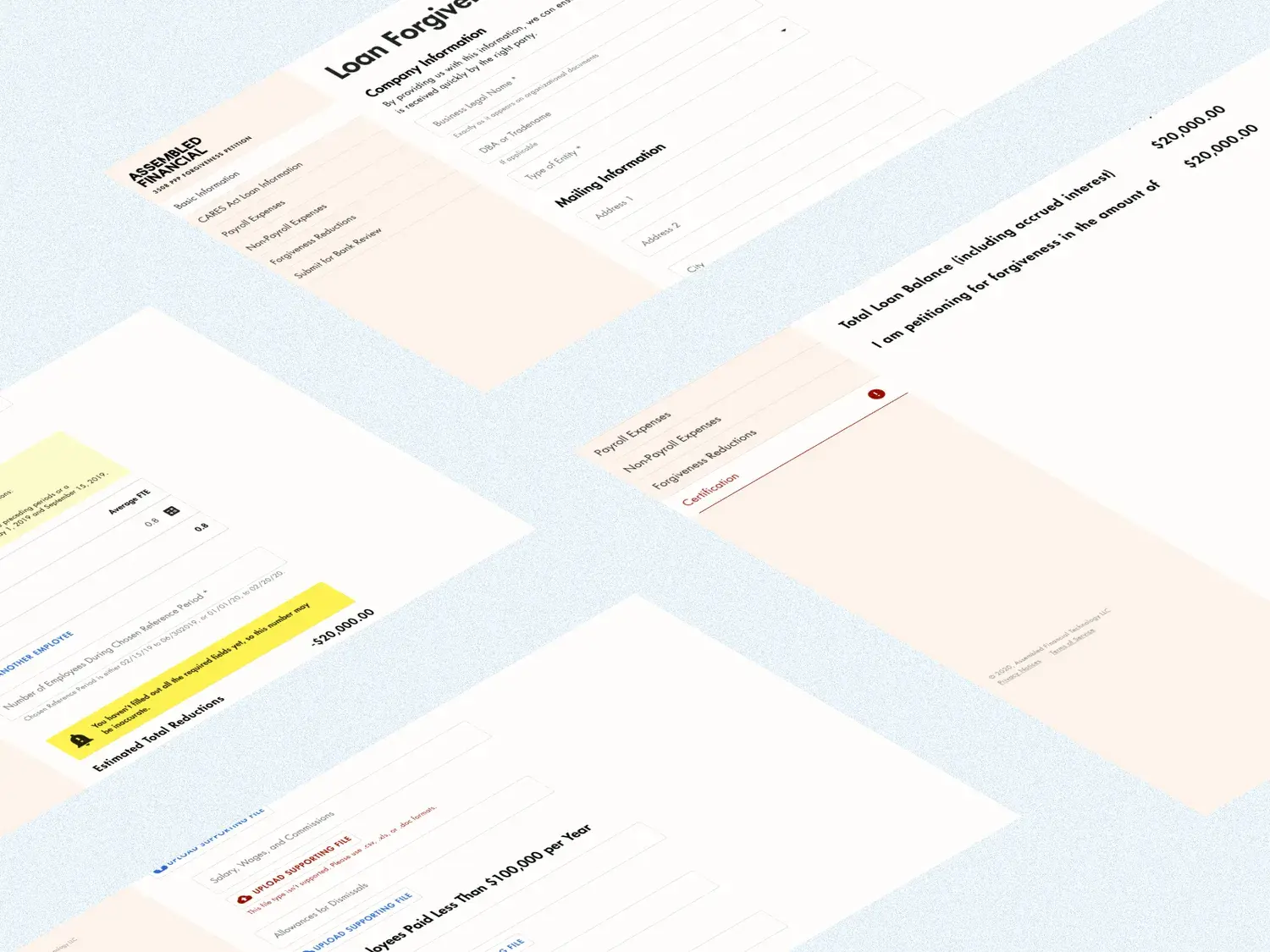Designing a fintech startup focused on the CARES Act from scratch.

Assembled Financial is a joint venture with Artium that’s focused on building a highly automated lending platform. They got their start by helping customers stay afloat in the pandemic through the CARES Act and have now moved into neobanking with Anda, which I also helped conceive.
Role #
Over the course of 6 months, I was the founding designer, helping them to start their team. I worked with 2 project managers and 6 engineers. I also helped them hire their first designer. This was a joint venture between Artium and Assembled Brands, where I and the team acted as a longer-term product organization where we saw to multiple releases and iterations.
Challenge #
Anything that’s involving taxes, loans, and the government is bound to be enormously complex. On top of that, I, the team, and even the government have an idea of exactly what applying for loan forgiveness would look like. Our task: take our best guess at simplifying a massively complex, 55-page form to help people apply for loan forgiveness.
While we tried to launch this quickly, we weren’t able to go to market before the funds in the CARES Act were depleted. As a result, we pivoted to focus on making a white label application with both lender-facing and customer-facing interfaces that helped with loan forgiveness.
Approach #
To that end, we focused our efforts on the fields that were required for the initial application. We did this in hopes of getting close enough so that we could move quickly when forgiveness details were announced.
Decode Complexity #
Working closely with experts in the industry (including direct counsel from the United States Treasury), the product manager and I decoded a complicated workflow and successfully modernized it.

Now, instead of tiny PDF form fields that a person would need to squint over, we made them accessible and easy to use. Not only that, we could easily localize it to the person’s preferred language. The outcome was a completed PDF that could be reviewed and submitted for forgiveness.
Help Lenders and Borrowers #
I also designed the form to allow for a non-linear path so that a loan advisor could review the customer’s information before sending it off for final approval. This meant I needed to allow for messaging, so we created an equally robust lender-facing interface.
Underlying all of this was a solid design system that allowed product managers and even engineers to prototype workflows in Figma. We had loads of fun, and it felt like we got to really do some good for people.
Results #
We successfully sold this to several financial institutions and helped thousands of people successfully apply for loan forgiveness.